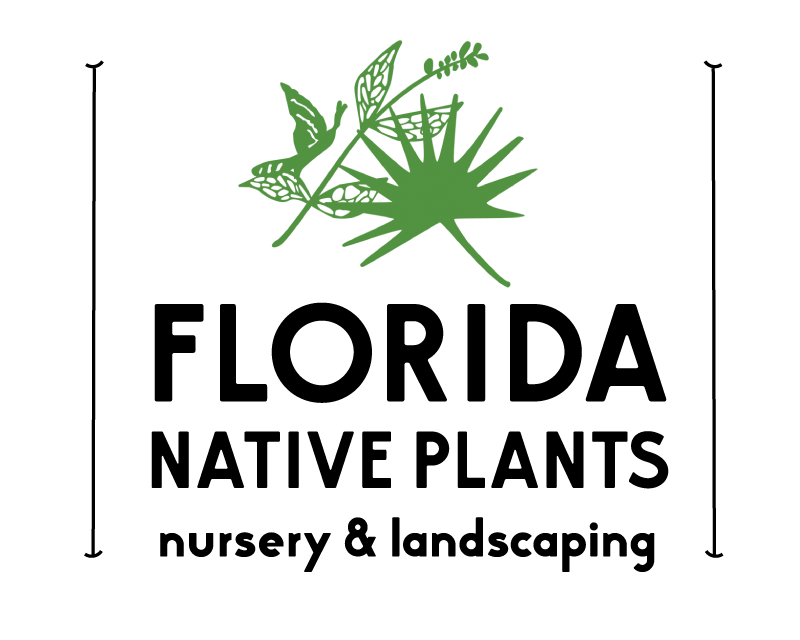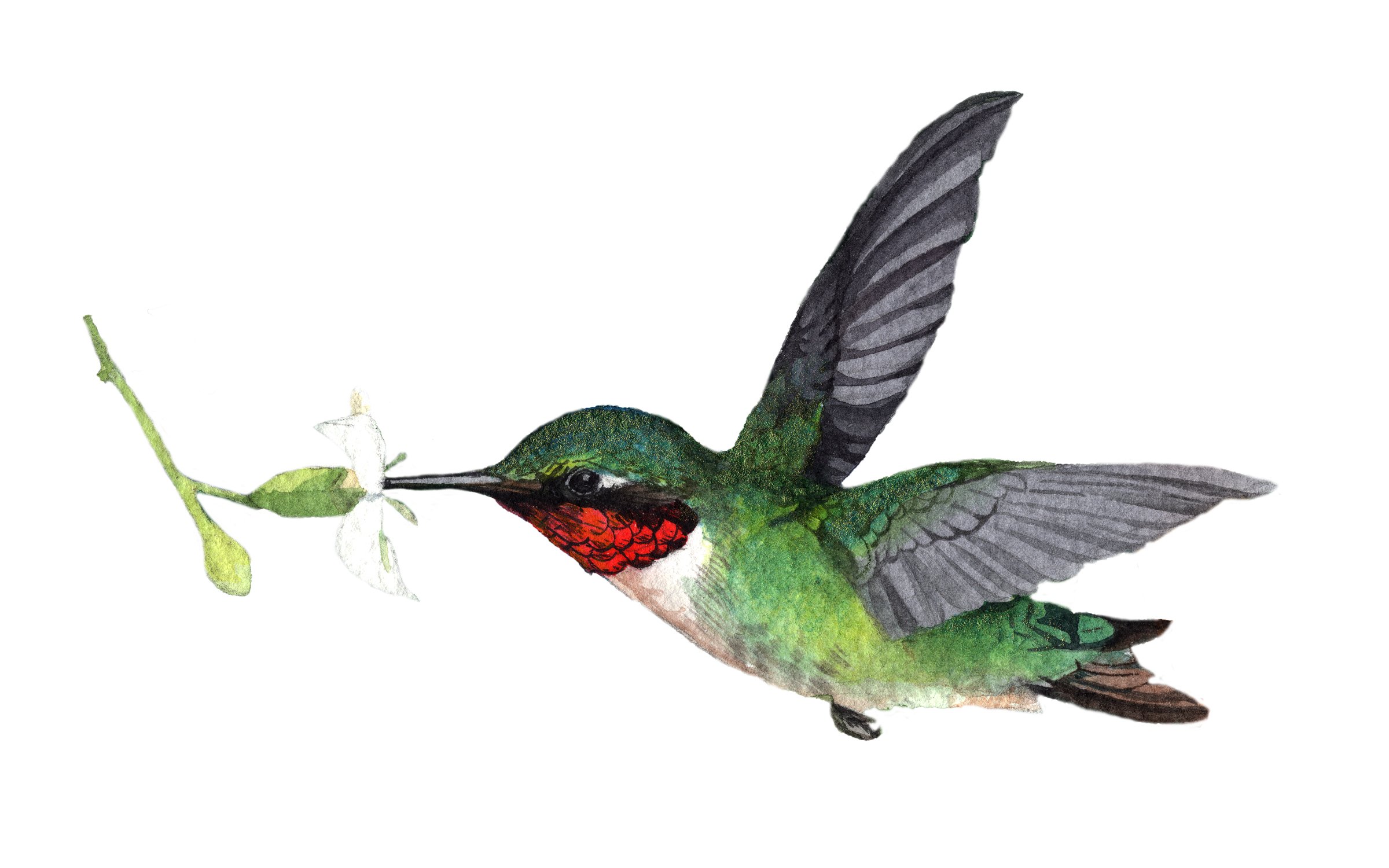Best Plants for Attracting Hummingbirds
Ruby-throated hummingbird nectaring on coral honeysuckle. Artwork by: Kim Heise
Florida Hummingbirds: Eleven different species have been observed in Florida but the most common is the ruby-throated hummingbird. There are at least two different ruby-throated hummingbird populations: the south-bound ruby-throats migrating into/through the state in fall and winter, and the north-bound ruby-throated hummingbirds coming through the state in the spring. Both spring and fall, Southwest Florida provides important feeding areas for hummingbirds who fly across the Gulf to southern wintering sites or back across the Gulf on their way to summer nesting sites in the North. They seek out native plants, their natural food supply, along their migratory routes. Typically, many birds return to the same feeding sites, so once you start getting them, you are likely to see them year after year unless the sites disappear with habitat changes in your area.
Hummingbird Garden Design: Ruby–throated hummingbirds are attracted most to nectar-rich plants with bright red or orange blossoms of tubular shape. First fill your yard with natives before adding non-native species of plants. Hummingbirds feed most comfortably from blossoms two feet or higher above the ground. An excellent planting design for a hummingbird garden follows the wildlife landscaping principle of layered vegetation. Attach a trellis to a wall and cover it with a cascade of Cross Vine or Coral Honeysuckle vine. Consider planting a Geiger, Bahama Strongbark or Cinnamon Bark tree for height at the back of your hummingbird garden. Add shrubs such as Coralbean and Firebush or Little Stronbark and then close to the ground, plant low flowering annuals and perennials like Tropical Sage and Skullcap.
To get started visit the Nursery, The Florida Native Plants Nursery , or consider purchasing and planting our Hummingbird Starter Garden from our online store.
Alternatively, let us design, deliver and plant a hummingbird garden for you. Call us at the Nursery 941-322-1915 for more information.
Native Trees:
Geiger Tree (Cordia sebestena)
Bahama Strongbark (Bourreria succulenta)
Cinnamon Bark (Canella winterana)
Native Shrubs:
Coral Bean (Erythrina herbacea)
Firebush (Hamelia patens)
Scarlet Hibiscus (Hibiscus coccineus)
GrayLeaf Teabush (Melochia tomentosa)
Necklace Pod (Sophora tomentosa var. truncata)
Native Vines:
Cross Vine (Bignonia capreolata)
Coral Honeysuckle (Lonicera sempervirens)
Native Wildflowers:
Cardinal Flower (Lobelia cardinalis)
Tropical Sage (Salvia coccine)
Non-native (but Florida-friendly) options:
Firespike (Odontonema stricta)
Jatropha (Jatropha integerrima)
Upright Large Purple Porterweed (Stachytarpheta spp.)
Fuchsia Skullcap (Scutellaria sp)
Papaya Tree (Papaya sp)
Ruby-throated hummingbird. Artwork by: Kim Heise


